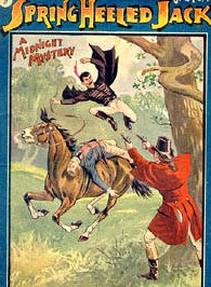 Spring heeled Jack - Public Domain
Spring heeled Jack - Public Domain Victorian London
In Victorian times London was the largest city in the world. It had experienced an explosion in population as people moved from the countryside in search of work as the Industrial Revolution unfolded.
In 1800 the population was about one million people but by 1880 it had reached 4.5 million.
This influx of people from the countryside was supplemented by people coming from foreign countries to live and trade in the great city. It was a melting pot of cultures where people brought their own traditions, superstitions and folklore with each adding to the other.
The rich and middle class lived in comfortable and spacious homes but lived in relatively close proximity to the poor and working class whose housing was usually in overcrowded slums. The streets were badly lit at night and crime was rife. In such an atmosphere urban legends sprang up and spread rapidly.
Spring-heeled Jack was generally described as having a long pale face, horns on his head and had the ability to breathe blue and white fire from his mouth. His eyes were also said to glow red and he wore a tight fitting garment of white over his tall, thin, body covered by a dark cloak. His hands were like sharp metallic claws.
He got his name from his acrobatic abilities and was said to be able to spring and leap huge distances to escape capture. According to two witnesses he could speak good English. Read more
 RSS Feed
RSS Feed
